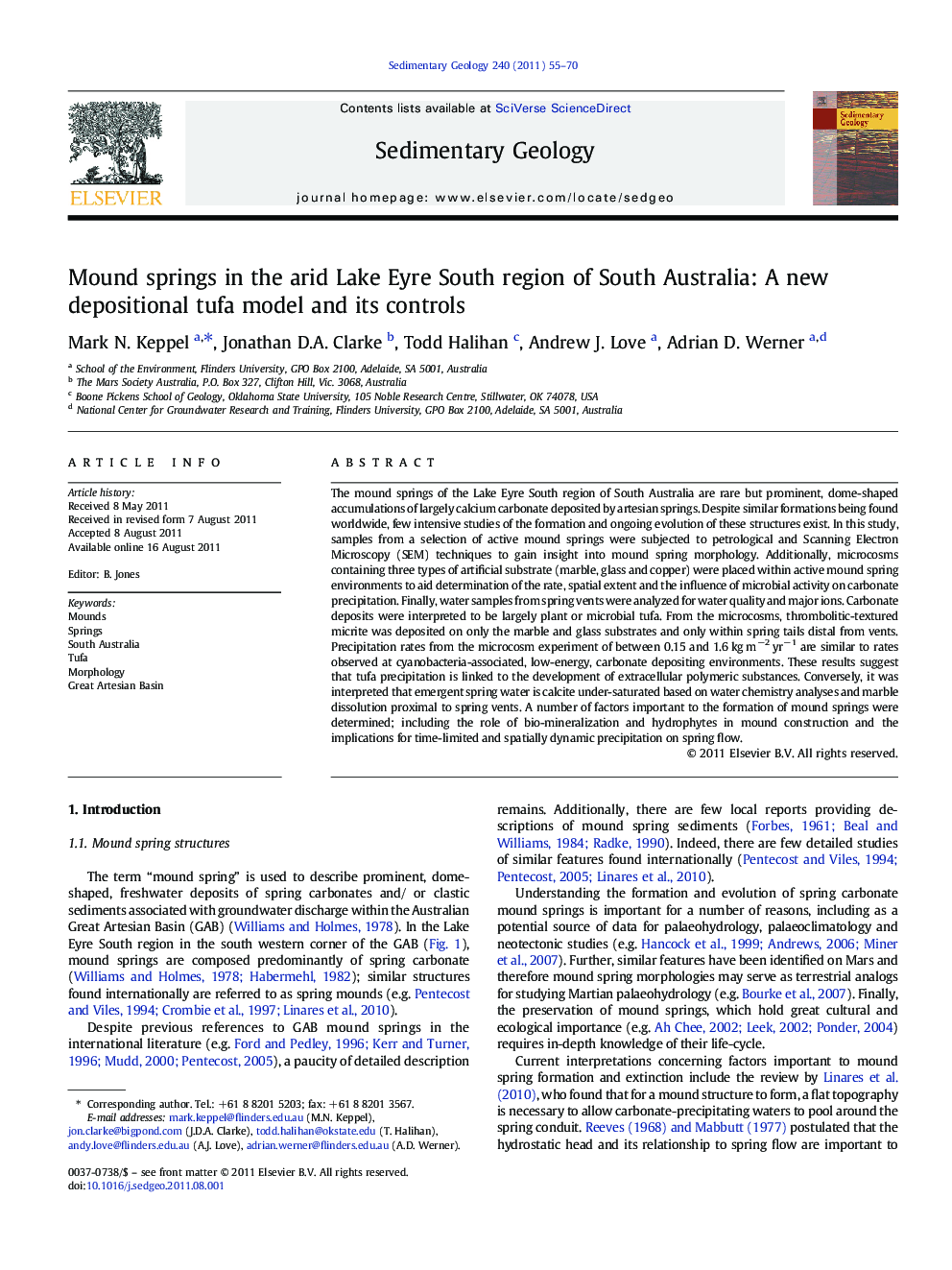| کد مقاله | کد نشریه | سال انتشار | مقاله انگلیسی | نسخه تمام متن |
|---|---|---|---|---|
| 4689880 | 1636102 | 2011 | 16 صفحه PDF | دانلود رایگان |

The mound springs of the Lake Eyre South region of South Australia are rare but prominent, dome-shaped accumulations of largely calcium carbonate deposited by artesian springs. Despite similar formations being found worldwide, few intensive studies of the formation and ongoing evolution of these structures exist. In this study, samples from a selection of active mound springs were subjected to petrological and Scanning Electron Microscopy (SEM) techniques to gain insight into mound spring morphology. Additionally, microcosms containing three types of artificial substrate (marble, glass and copper) were placed within active mound spring environments to aid determination of the rate, spatial extent and the influence of microbial activity on carbonate precipitation. Finally, water samples from spring vents were analyzed for water quality and major ions. Carbonate deposits were interpreted to be largely plant or microbial tufa. From the microcosms, thrombolitic-textured micrite was deposited on only the marble and glass substrates and only within spring tails distal from vents. Precipitation rates from the microcosm experiment of between 0.15 and 1.6 kg m−2 yr−1 are similar to rates observed at cyanobacteria-associated, low-energy, carbonate depositing environments. These results suggest that tufa precipitation is linked to the development of extracellular polymeric substances. Conversely, it was interpreted that emergent spring water is calcite under-saturated based on water chemistry analyses and marble dissolution proximal to spring vents. A number of factors important to the formation of mound springs were determined; including the role of bio-mineralization and hydrophytes in mound construction and the implications for time-limited and spatially dynamic precipitation on spring flow.
► Spring carbonate deposits from Lake Eyre South mound spring environments studied.
► Fossiliferous and modern mound carbonates found to be composed of tufa.
► Precipitation is microbially mediated and deposits in highly vegetated environments.
► Emergent springwaters are initially undersaturated with respect to calcite.
► Tufa precipitation was found to be a time-dependent and spatially dynamic process.
Journal: Sedimentary Geology - Volume 240, Issues 3–4, 15 October 2011, Pages 55–70